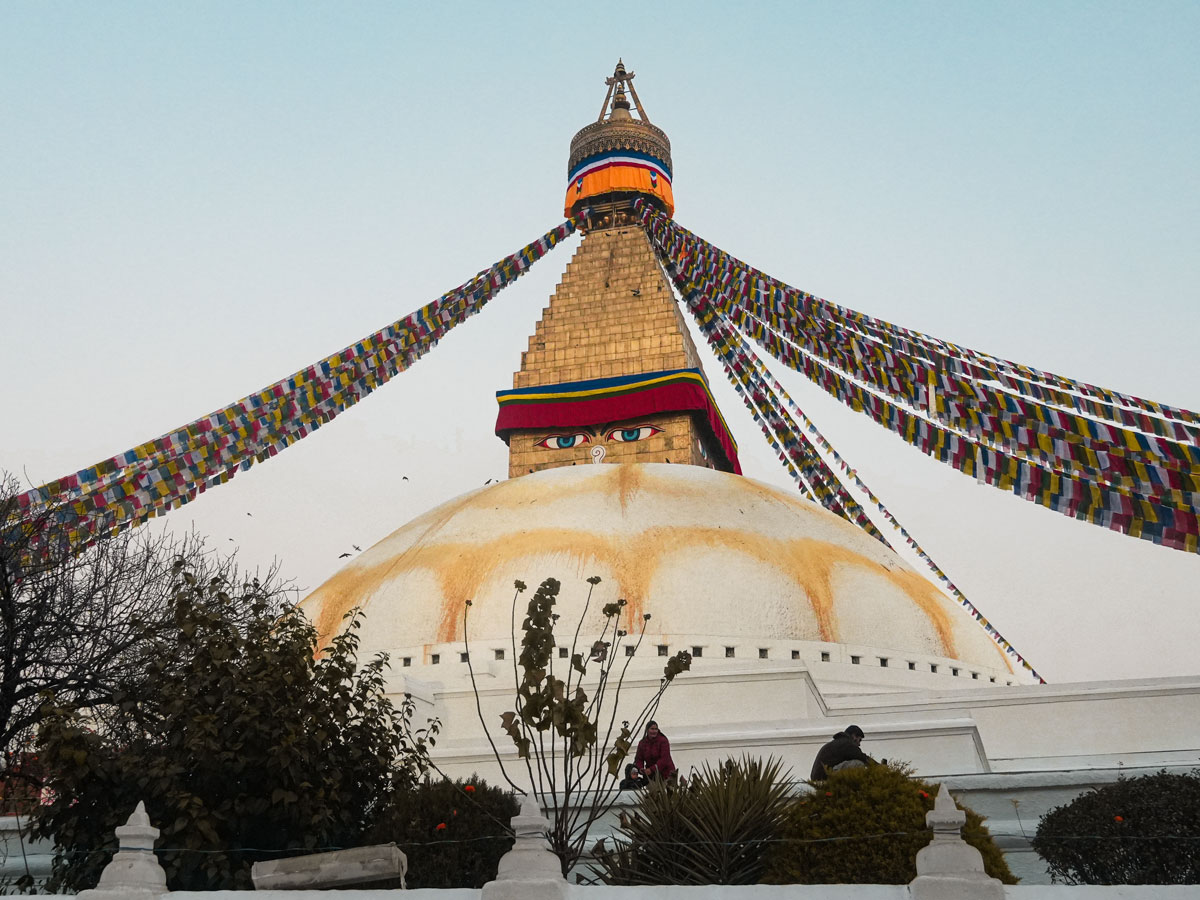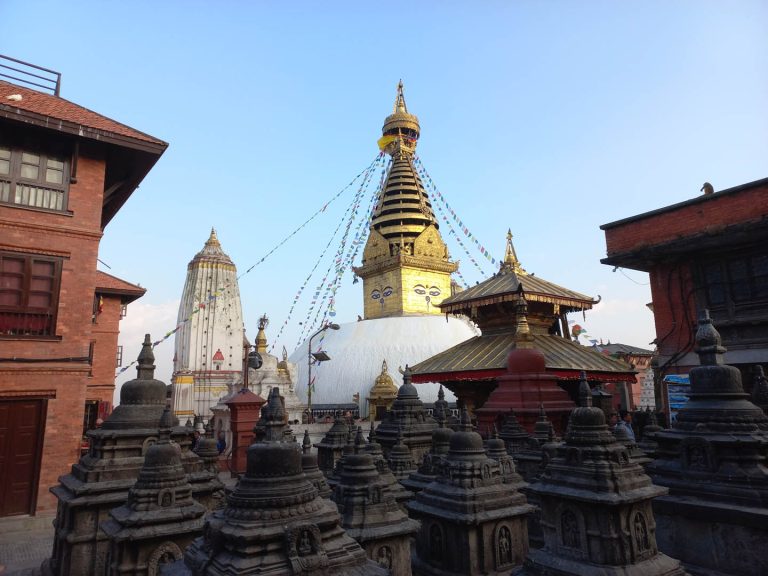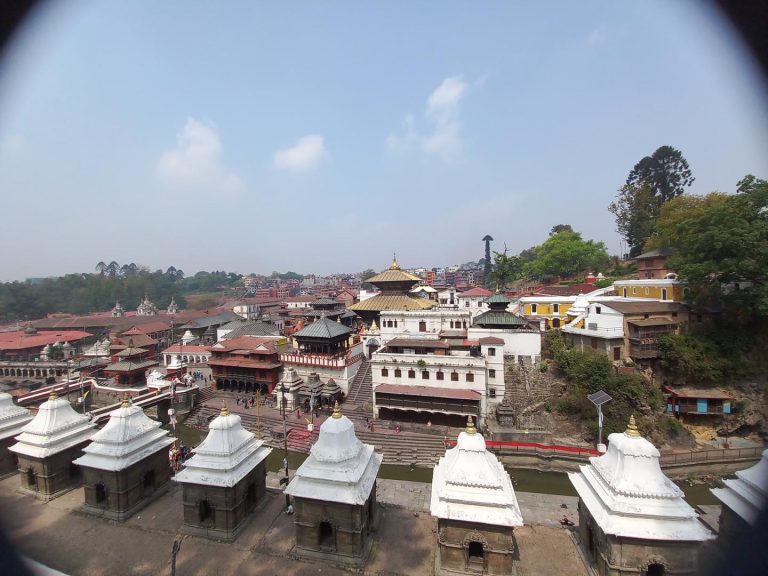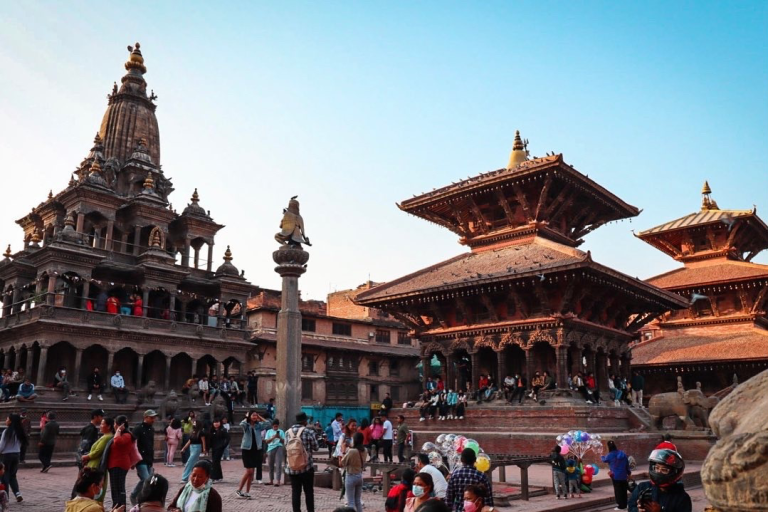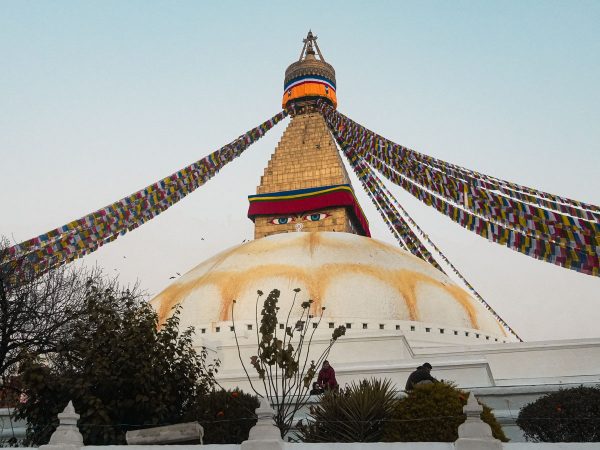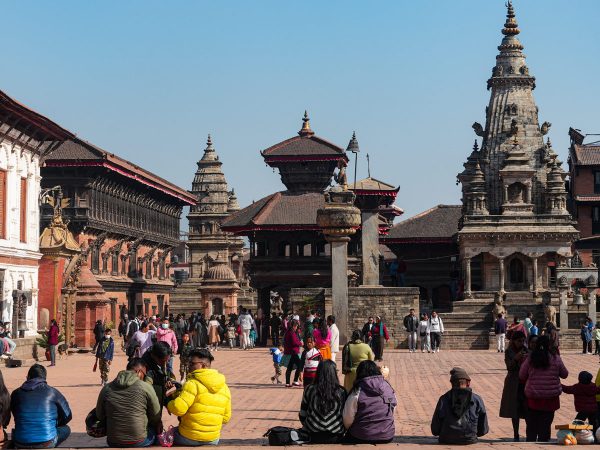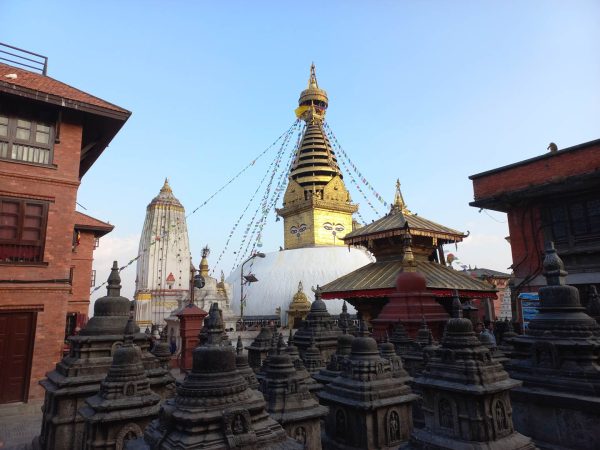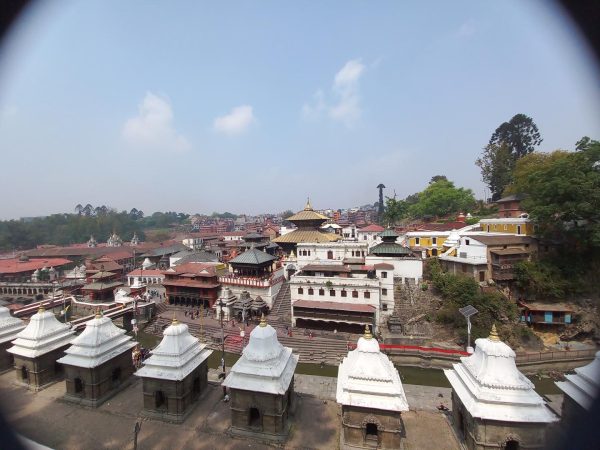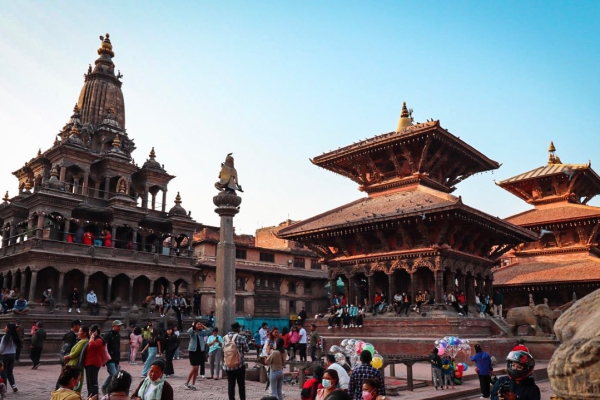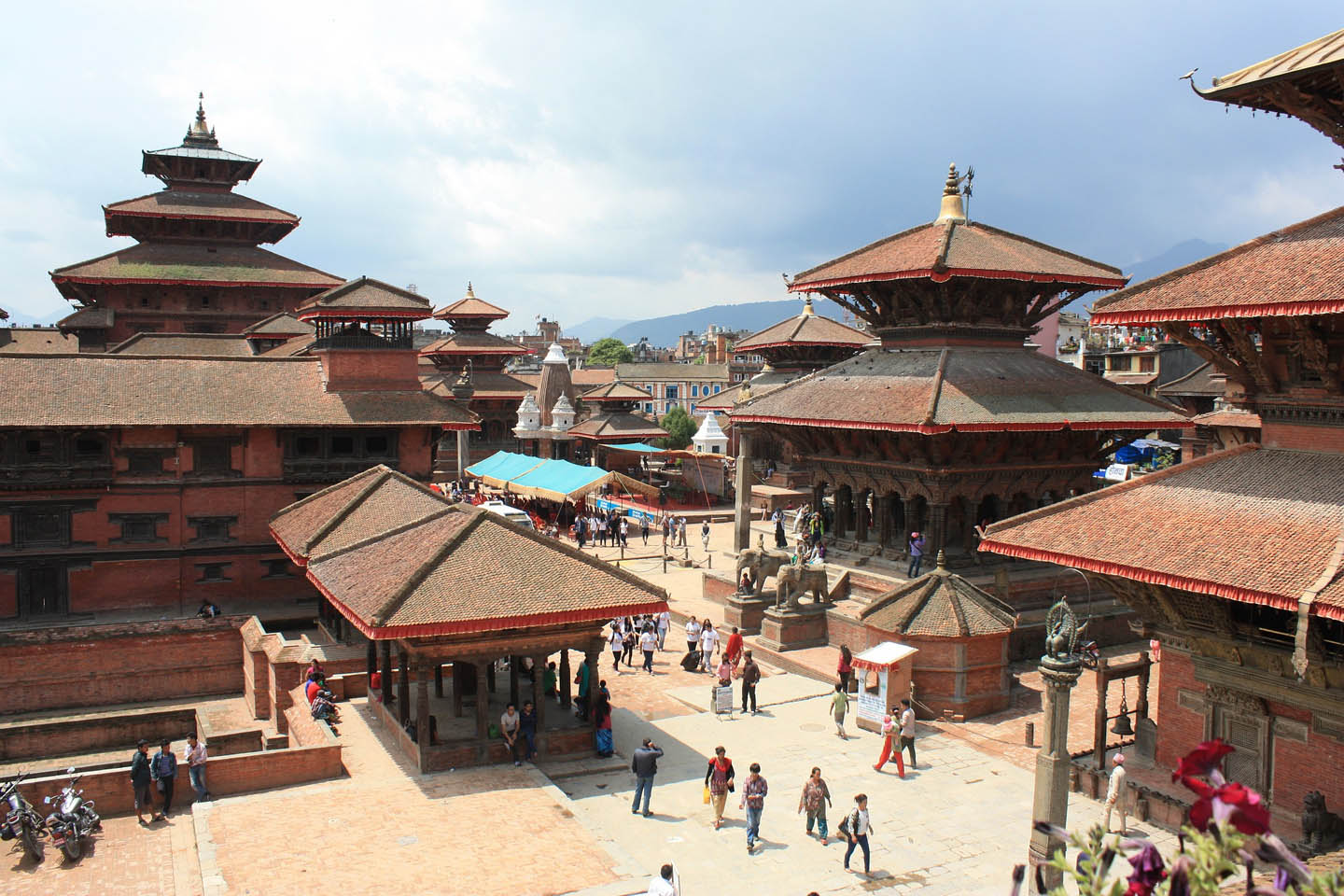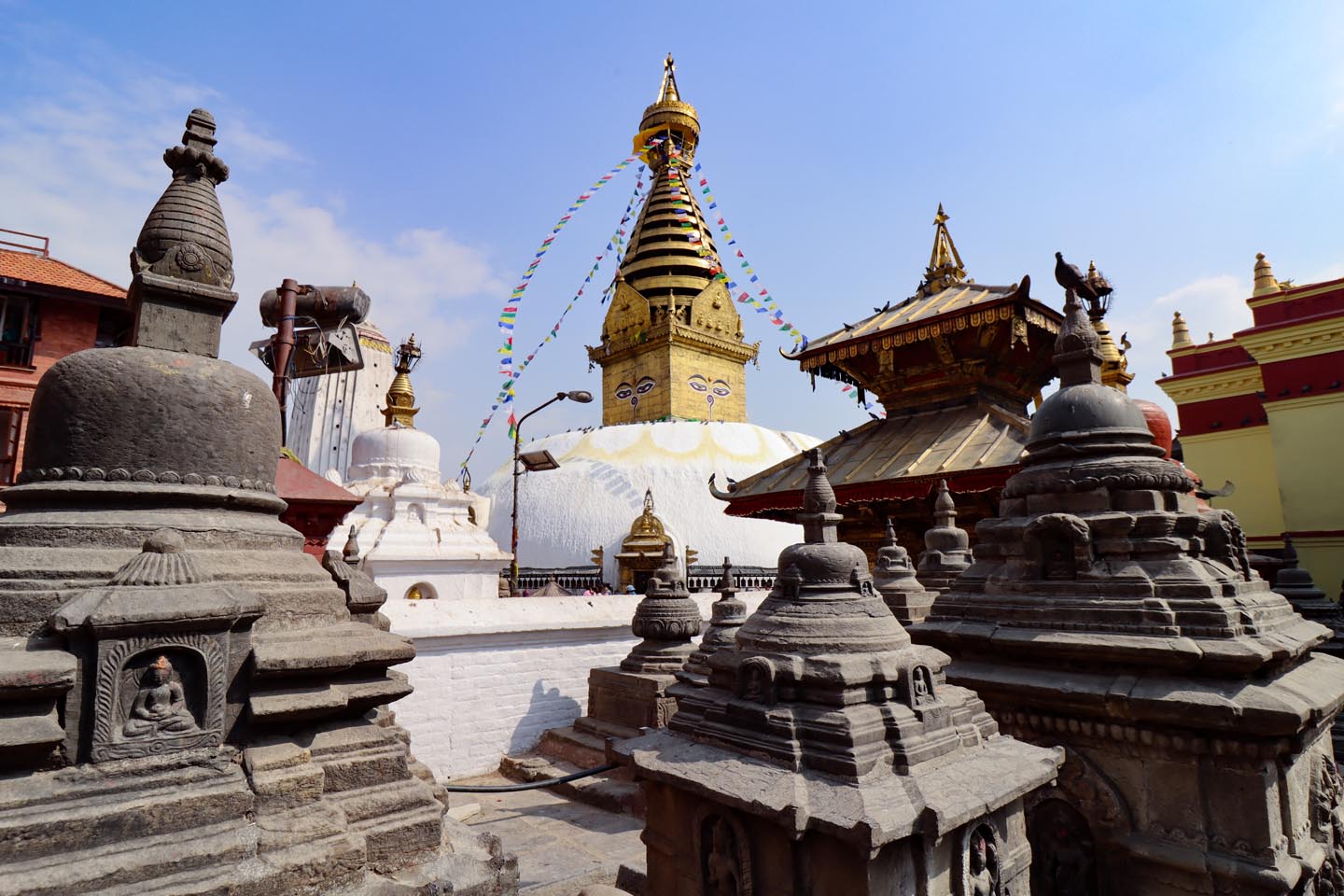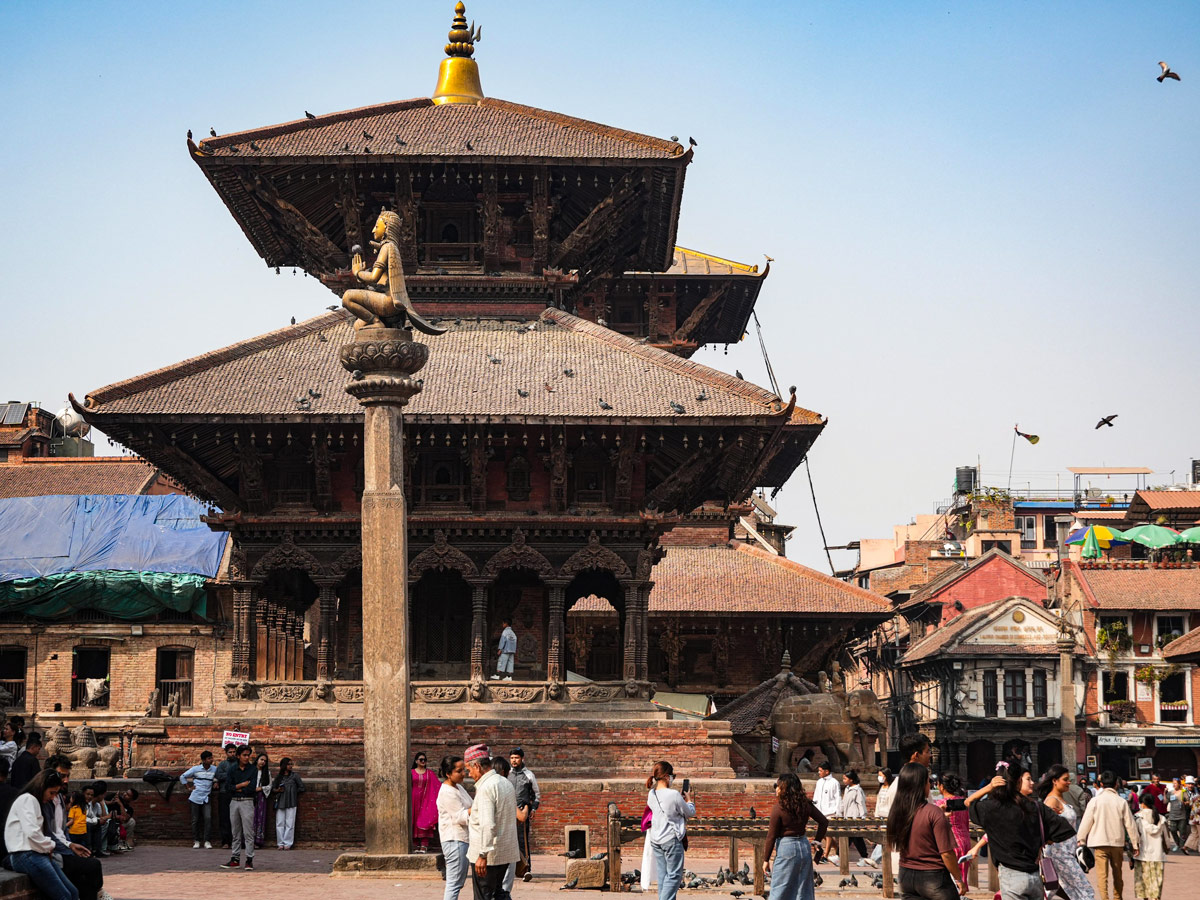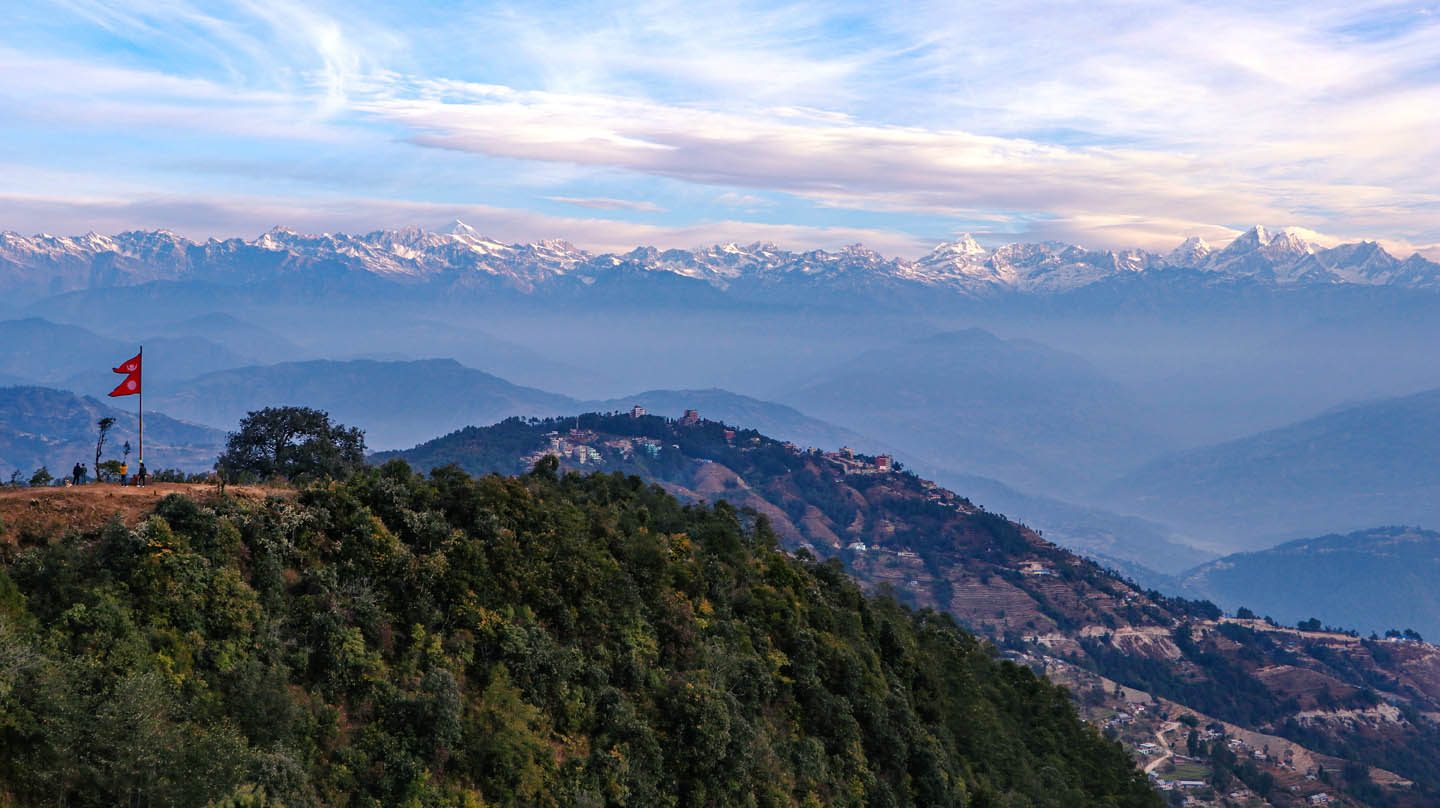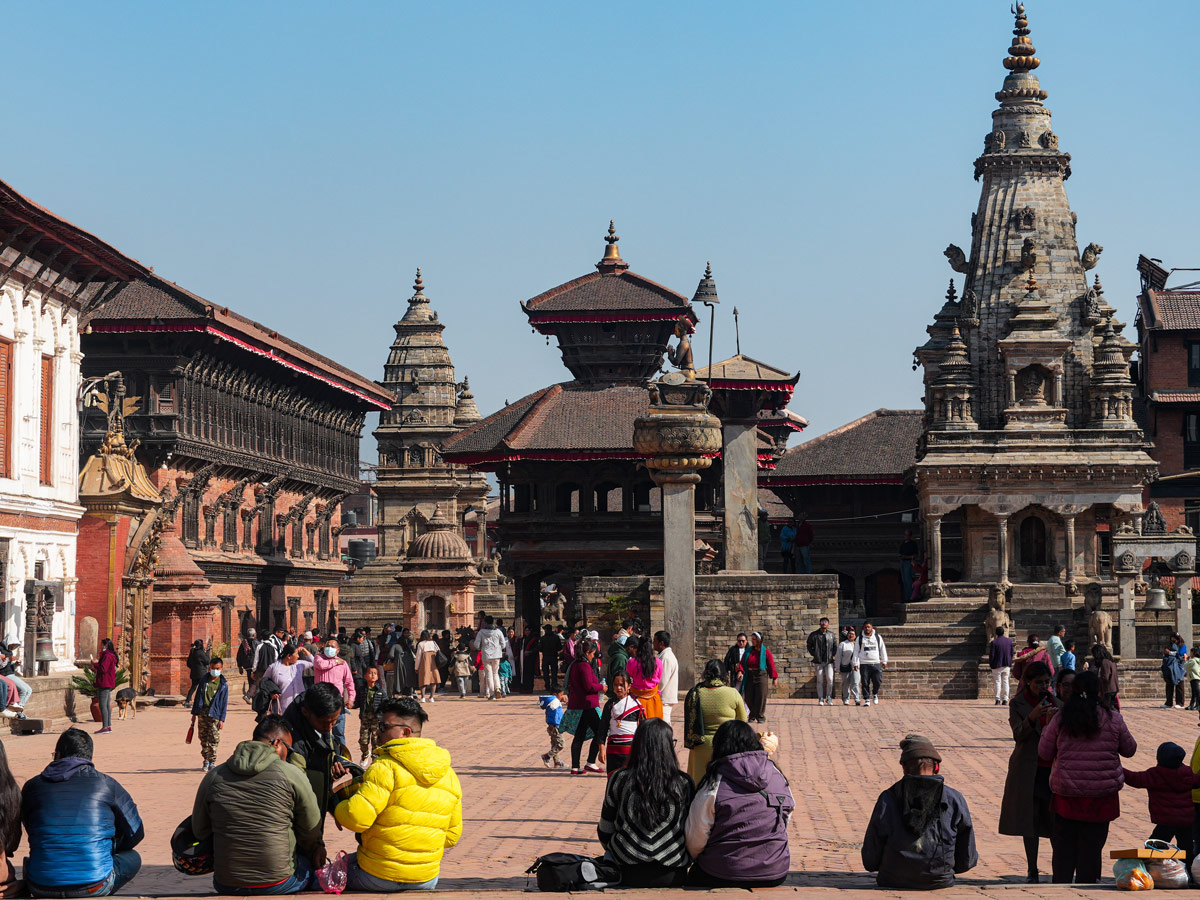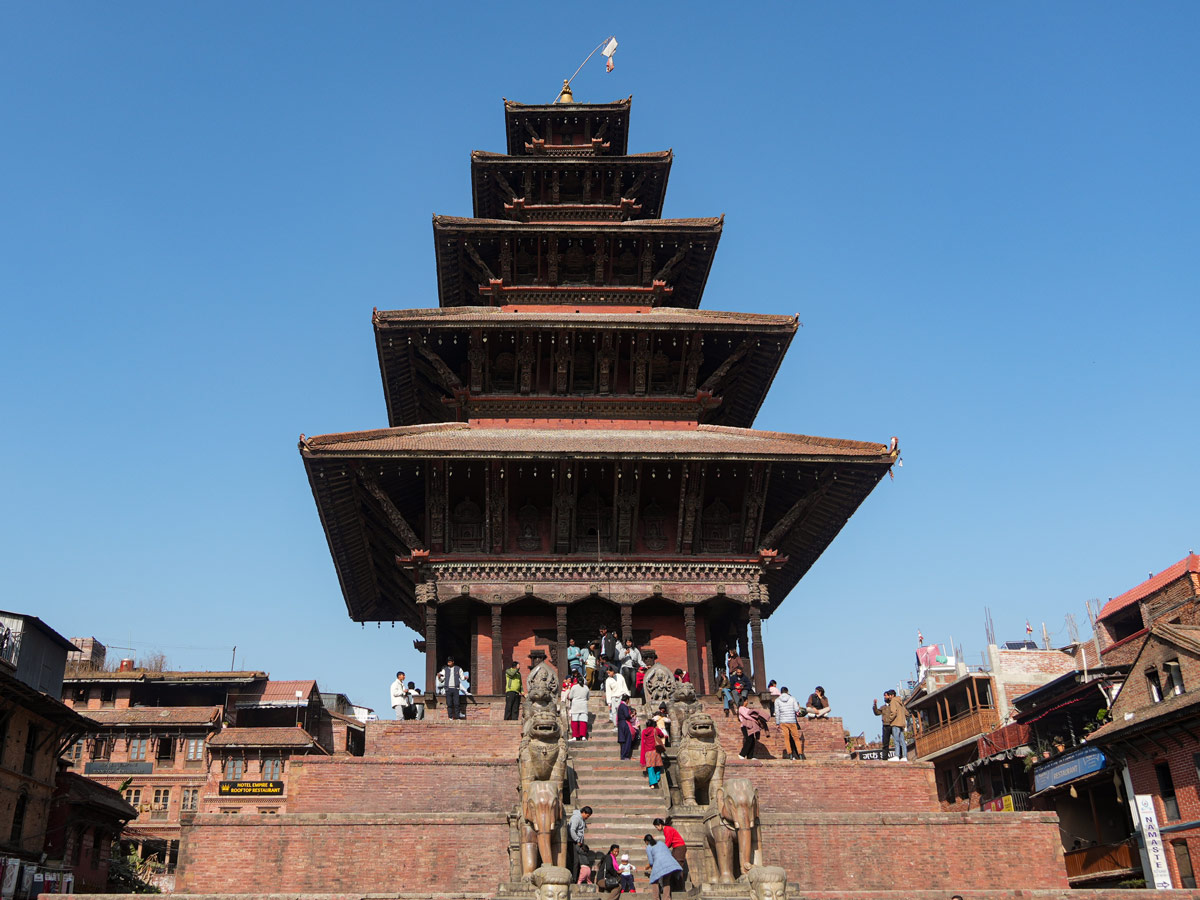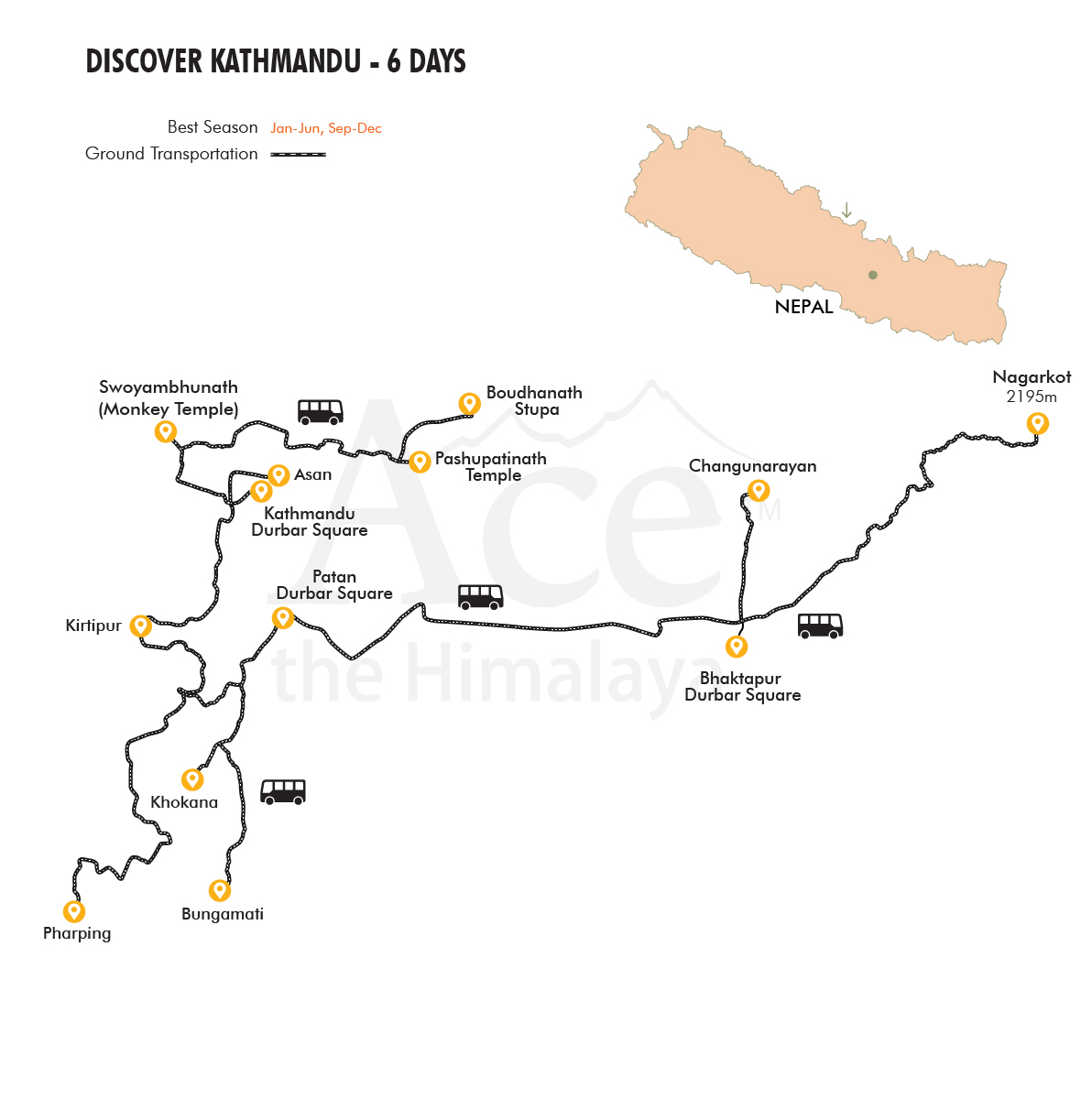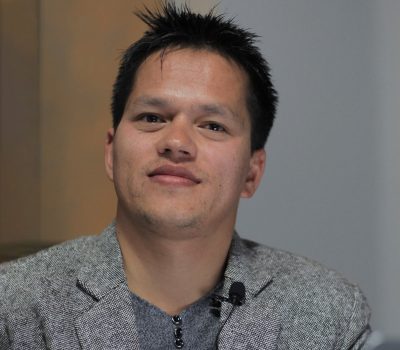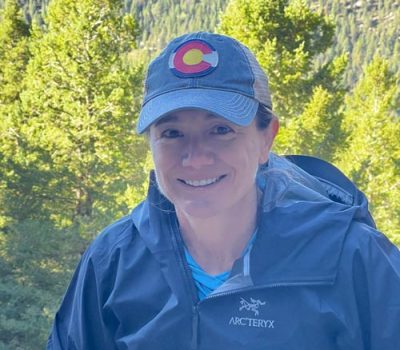Discover Kathmandu - 6 Days
Visit medieval palaces, sacred Hindu and Buddhist temples, traditional Newari villages like Kirtipur, Bungamati and enjoy a Himalayan sunrise from Nagarkot on this 6-day Discover Kathmandu Valley tour.
Discover Kathmandu Highlights
- Discover the tales of heritage of Kathmandu, Patan, and Bhaktapur Durbar Squares.
- Witness sacred rituals at Pashupatinath, Boudhanath and Swayambhunath (Monkey Temple).
- Visit Pharping, a sacred site where Guru Padmasambhava attained enlightenment.
- Explore and learn the traditional Newari lifestyle in Kirtipur, Bungamati, and Khokana.
- Admire panoramic views of the Himalayas from Nagarkot with sunrise.
- Step back in time and discover the oldest temple of Nepal- Changu Narayan Temple.
- Stroll through Asan Market and experience Kathmandu’s oldest local bazaar.
- Enjoy comfortable stays in 3-star hotels and guided cultural experiences.
Discover Kathmandu Overview
Kathmandu, the mystical and magical city, is famous for its bustling streets, vibrant culture, rich historical heritage, exquisite temples, and religious sites. Our 6-day Discover Kathmandu tour offers a deep dive into the heart of this enchanting valley, taking you on a journey through UNESCO World Heritage Sites, traditional Newari towns, and scenic hilltop viewpoints.
Although the city is a valley, the views of many Himalayan gems including Langtang and Ganesh Himal can be clearly seen from here. This Kathmandu trip highlights the best of Kathmandu Valley.
Begin your adventure in Kathmandu, the heart of Nepal’s cultural and spiritual heritage. Explore iconic landmarks like Swayambhunath Stupa (Monkey Temple), Pashupatinath Temple, and Kathmandu Durbar Square – each offering city’s rich Buddhist and Hindu history. Wander through Asan Market, one of the oldest and busiest local bazaars, where spices, textiles, and traditional goods create a colorful display of daily life.
Venture to Pharping, a sacred pilgrimage site associated with Guru Rinpoche’s (Padmasambhava) enlightenment. Then explore the culturally rich Newari towns of Kirtipur, Bungamati, and Khokana, where authentic village life thrives and centuries-old customs and rituals flourish.
Continue your exploration with a visit to Patan Durbar Square, an architectural masterpiece filled with stone temples, royal courtyards, and local artisans. Then, head to Changu Narayan Temple.
End your trip with an overnight stay in Nagarkot, witnessing a breathtaking Himalayan sunrise. Explore Bhaktapur Durbar Square and Boudhanath Stupa before returning to Kathmandu for a farewell cultural dinner.
During this trip, you will have a professional guide at your disposal and travel in a comfortable private tourist vehicle. All accommodation during the tour will be at 3-star hotels available in the area.
Short Itinerary
Arrival at Tribhuvan International Airport in Kathmandu (1,400 m/4,593 ft) and Transfer to Hotel. Overnight at 3-star hotel.
Guided Sightseeing in Pashupatinath Temple, Swayambhunath, Kathmandu Durbar Square, and Asan. Overnight at 3-star hotel.
Guided Sightseeing in Pharping, Kirtipur, Khokana, and Bungamati. Overnight at a 3-star Hotel.
Guided sightseeing at Patan Durbar Square, Changunarayan Temple, and an evening drive to the Nagarkot hill station. Overnight at a 3-star hotel.
Witness the spectacular sunrise from Nagarkot, Guided Sightseeing at Bhaktapur Durbar Square and Boudhanath Stupa and then return to Kathmandu. Evening cultural dinner. Overnight at 3-star hotel.
Transfer to the Tribhuvan International airport for your final departure.
 Trip Note
Trip Note
Our standard itinerary might differ slightly due to unpredictable happenings and events out of our control. Factors such as flight cancellation/delay, unfavorable weather, natural calamities, newly implemented government rules, political affairs, transport, etc., are possible. Evaluating the situation’s possible solutions allow the tour to resume as much as possible based on the best alternatives. In these times, we look for your cooperation and flexibility.
It is advised you arrive one day before the trip starts date so you can rest and it also gives you time to buy some local wear for the tour. Moreover, Ace the Himalaya is one of the prime supporters of the social organization Sambhav Nepal. There are several ongoing projects in a village called Arupokhari (Gorkha district) which you are more than welcome to visit or even volunteer at. You will be able to gain a different insight into the lives of the people in the hills and also make a difference!
Departures & Availability
Our groups are small with maximum 14 people. We create groups of independent travelers, friends and families which maintains close interpersonal connection, engage more and get into depth of the journey. Choose a date from the calendar to reserve your spot.
Our groups are small with maximum 14 people. We create groups of independent travelers, friends and families which maintains close interpersonal connection, engage more and get into depth of the journey. Choose a date from the calendar to reserve your spot.
Looking for personalized experience? We organize privately guided journey which is mainly designed to fit your taste and interest. Please fill out the form below to get started.
Price Includes
Accommodation
- Twin-sharing/double accommodation in a 3-star hotel in Kathmandu for 4 nights and Nagarkot for 1 night including breakfast. (Private room accommodation can be organized at an extra cost).
Meals
- A farewell dinner on the last night in Nepal
Guided City Tour
- Guided city tour in Kathmandu Valley
Transportation
- All (international and domestic) airport transfers on a tourist vehicle
- All ground transportation by private tourist vehicle
Guide and Staff
- Ace the Himalaya’s licensed English-speaking guide
- The required number of ground staff during the tour, such as drivers, helpers, etc.
- Wages, accommodation, meals, gear, insurance, and medications for all staff
Permits
- Entry permits and fees for all temples, parks, monasteries, and cultural or historical sites.
Benefits and Takeaways
- 1 Ace the Himalaya’s duffle/kit bag & sun hat
Administrative & Taxes
- All administrative expenses and government taxes
Price Excludes
- International flight fare and airport departure tax
- Lunch and dinner in Kathmandu, and Nagarkot – about USD 15 to USD 20 per person per day.
- Any beverages including bottled and boiled water
- Tips for hostess and driver. (Tipping is expected).
- Nepal Entry Visa (Visa can be acquired easily after your arrival at Tribhuvan International Airport in Kathmandu with a fee of USD 30 for 15 days visa, USD 50 for 30 days visa and USD 125 for 90 days visa)
- Your travel insurance.
- Any expenses other than the Price Include section
Discover Kathmandu Itinerary
Expand AllDay 01: Arrival at Tribhuvan International Airport in Kathmandu and transfer to hotel.
Upon arrival at Tribhuvan International Airport, you will be warmly welcomed by our airport representative holding an Ace the Himalaya signboard. You will then be transferred to your hotel in a private vehicle. After check-in, the rest of the day is free for you to relax and recover from your journey or take a leisurely walk around nearby areas.
Note: You will have a pre-trip briefing in the evening, either at our office or at your hotel. This is a great opportunity to ask any questions you may have about your trip and also meet your trip guide
Please remember to bring the following documents to the meeting:
- A copy of your passport-sized photo
- Your original passport
- A clear and readable copy of your travel insurance policy
Day 02: Guided Sightseeing around the Kathmandu Valley.
After an early breakfast in your hotel, begin a guided sightseeing tour of Kathmandu’s UNESCO World Heritage Sites. The sightseeing places we visit today will include:
Pashupatinath Temple
Pashupatinath is one of the most sacred Hindu temples in the world and lies 5 kms east of the city center. The richly ornamented pagoda houses the sacred Linga, or phallic symbol, of Lord Shiva. Experience the spiritual atmosphere, witnessing ancient rituals and vibrant ceremonies.
Swayambhunath Stupa (Monkey Temple)
Perched atop a hill, Swayambhunath is a sacred Buddhist site offering stunning panoramic views of the Kathmandu Valley. Famous for its playful resident monkeys, it is also a powerful symbol of harmony and peace. The site is surrounded by smaller shrines, statues, prayer wheels, and vibrant prayer flags fluttering in the wind.
Kathmandu Durbar Square
Kathmandu Durbar Square, also known as Hanuman Dhoka Durbar Square, is historic royal complex featuring exquisite palaces, courtyards, and temples from the Malla era. It is one of the most iconic landmarks in Kathmandu and the residence of the Living Goddess Kumari. Don’t miss the fascinating 17th-century stone inscriptions and vibrant local life.
Asan Market
Asan Market is one of the oldest and busiest traditional marketplaces in Kathmandu. Bustling with activity, it offers a lively atmosphere filled with shops selling spices, textiles, brassware, and everyday household goods. As you walk through its narrow alleys, you’ll witness a vibrant mix of culture, trade, and daily life deeply rooted in the city’s Newari heritage.
Day 03: Guided Sightseeing in Pharping, Kirtipur, Khokana and Bungamati.
Today, enjoy a guided tour of some lesser known but culturally rich sites around Kathmandu:
Pharping
Pharping, located about 19 km south of Kathmandu, is a revered spiritual site for both Hindu and Buddhist pilgrims. It is believed to be the place where Guru Padmasambhava (Guru Rinpoche) attained enlightenment in the sacred Asura and Yangleshö caves, giving it deep significance in Tibetan Buddhism. Surrounded by monasteries, meditation retreats, and serene natural landscapes, Pharping offers a tranquil and spiritually enriching experience.
Kirtipur
Kirtipur is a historic medieval town southwest of Kathmandu. This place is famous for its well-preserved Newari culture and traditional architecture. With its stone-paved streets, red-brick houses, traditional woodwork, and numerous temples and shrines, the town feels like a living museum. It played a significant role in resisting King Prithvi Narayan Shah’s conquest in the 18th century.
On the present day, you can explore hidden courtyards, universities, and local eateries in this cultural heritage site.
Khokana
A short distance from Kirtipur lies Khokana, a peaceful, rural Newari village. Known for its mustard oil production using traditional wooden mills (ghani), it offers a glimpse into agrarian Newar life. It’s quiet lanes, open courtyards, and historical homes reveal centuries of heritage. Khokana was the first village in Nepal to be electrified during the Rana regime and is also renowned for its unique festival called Sikali Jatra.
Bungamati
Located close to Khokana, Bungamati is a culturally rich village believed to be the birthplace of Machhindranath, a deity worshiped by both Hindus and Buddhists. The village is centered around the Rato Machhindranath Temple, which plays a key role in the famous Rato Machhindranath chariot festival held in Patan. The ancient architecture, serene surroundings, and deeply spiritual sites make it an important cultural stop during your Kathmandu exploration tour.
Day 04: Guided sightseeing at Patan Durbar Square, Changunarayan Temple, and an evening drive to the Nagarkot hill station.
We’ll spend day 4 of our Kathmandu exploration with a guided morning tour to Patan. In the evening, we’ll drive to Nagarkot, a scenic hill station about an hour from Kathmandu. The highlights of the day include:
Patan Durbar Square
Patan Durbar Square is an enchanting combination of palace buildings, artistic courtyards and graceful pagoda temples. The former royal palace complex is the center of Patan’s religious and social life and houses a museum containing an array of bronze statues and religious objects. One remarkable monument here is a 17th-century Krishna Temple dedicated to the Hindu god Krishna, built entirely of stone.
A trip to the Tibetan Refugee Camp and the Handicraft Center will also be covered while visiting Patan, where one witnesses the hand weaving of Tibetan carpets and moulding of metal statues.
Changu Narayan Temple
Situated atop a hill ridge about 18 km from Kathmandu, Changu Narayan is one of the oldest and most revered Hindu temples in Nepal. Dedicated to the Hindu God Vishnu, the temple the temple is believed to have been originally built in the 4th century AD by King Haridatta Varma. It is a fine example of traditional Nepali pagoda-style architecture. The temple complex is a UNESCO World Heritage Site offering panoramic views of the surrounding valley and hills.
Nagarkot
Nagarkot is one of the most scenic spots for sunrise situated about 32 km east of Kathmandu. This is the place where golden light slowly unveils Mt. Everest, Langtang, Ganesh Himal, Gaurishankar and other majestic summits. Its peaceful atmosphere makes visitors come here to relax, enjoy nature, and immerse themselves in the spectacular beauty of Nepal’s mountains. There are also some great hiking trails in Nagarkot.
Day 05: Witness the spectacular sunrise from Nagarkot, Guided Sightseeing at Bhaktapur Durbar Square and Boudhanath Stupa, and then return to Kathmandu.
Wake up early to catch a stunning sunrise over the Himalayas from Nagarkot’s viewpoint. After breakfast, we’ll begin our drive back toward Kathmandu, stopping along the way to explore the following cultural landmarks.
Bhaktapur Durbar Square (Bhadgaon)
Bhaktapur Durbar Square is an UNESCO World Heritage Site and a living museum of medieval art and architecture. Your city guide will walk you through Bhaktapur’s intricately carved palaces, pagoda temples, and vibrant squares. The highlights of Durbar Square include the 55-window palace, the Golden Gate, the Lion Gate, art galleries, statue of King Bhupatindra Malla, and the iconic Nyatapola Temple—Nepal’s tallest pagoda-style temple, renowned for its five-tiered structure and architectural brilliance.
Boudhanath Stupa
Lies about 6 kms to the east of downtown Kathmandu, Boudhanath is the largest stupa in the valley. It looms 36 meters high and presents one of the most fascinating specimens of Buddhist stupa architecture. The stupa features a massive white dome topped by a golden spire with the all-seeing eyes of the Buddha painted on each side. The base is surrounded by prayer wheels, butter lamps, and colorful Tibetan prayer flags. Walking clockwise around the stupa (known as kora) alongside local pilgrims offers a calming and spiritually immersive experience.
In the evening, enjoy a traditional cultural dinner with live performances, giving you a taste of Nepal’s rich arts and heritage.
Day 06: Transfer to the airport for your final departure
The trip concludes marking the end of your unforgettable 6 days Kathmandu tour. After breakfast, our airport representative will drop you at the international airport in Kathmandu for your flight departure from Nepal.
Gears and Equipment
All you need to bring for this tour is simply some comfortable clothes. There is no requirement for special equipment on the tour. However, for your ease, the following gives you a general idea about the personal items you need to manage for the trip. The personal items referred to here are optional and depend upon your choice. The most important factor to be considered while choosing the equipment and your backpack is the time of the year you are traveling.
We will supply complimentary water and a windproof duffel bag, which you can use on the tour for your shopping purpose. The duffel bag is yours to keep.
Therefore, this list is only a guide. You can use the list as a reference. There are numerous options, brands, and versions of each piece of clothing and equipment. Use your experience and the listed features to find the best gear for you. Some of the above equipment can be easily found in stores in Kathmandu.
(Please note that winter wears are only necessary if in case you’re traveling in the month of Nov – Dec)
General
- Rucksack bag or suitcase
- Day pack Warm wool or synthetic hat that covers your ears
- A pair of pair warm gloves
- T-shirts, cotton pants (loose jeans/khakis), shorts, and a waterproof shell jacket (preferable if you are traveling in the rainy season from June to September)
- Lightweight long underwear/thermals
- Light camping shoes or sneakers
- Sandals/flip-flops (Optional)
- Sunglasses
- Neck gaiter
- Daypack (35-45 liters recommended) with rain cover
- Wool or technical fabric liner gloves
- Liner socks (optional such as silk)
Medicines And First Aid Kits
(Please note our guide will also carry the first-aid bag during the tour. However, we still recommend you bring your personal first-aid kit as well.)
- Ibuprofen for general aches and pains
- Immodium or Pepto Bismol capsules for upset stomach or diarrhea
- One small-sized first-aid kit with blister treatments such as mole skin, band-aids, some waterproof tape, anti-infection ointments, etc
Other Essentials
- Passport
- Extra copies of passport-sized photos
- Reusable water bottle
- Toiletry kits
- Lip balm
- Sunscreen
- Waterproof/dry bags for carrying important documents and money
- Airline tickets (Please leave a copy at our office in Kathmandu. This can be useful if there is a change in the date of the flight.)
Optional
Once in Nepal, if you have the time, you can purchase supplies and gear for hiking. Thamel, Kathmandu’s tourist hub, is home to many shops where you can get a variety of reasonably priced touring equipment.
- Power bank or extra batteries
- Cameras and mobile phone
- Binoculars
- Cards/book
- We give you a free duffel bag and baseball cap during your pre-trip meeting in Kathmandu. The duffel bag will be used to pack your touring supplies.
- This list is only a guide. You can use the list as a reference.
- There are numerous options, brands, and versions of each piece of clothing and equipment.
- Use your experience and the listed features to find the best gear for you.
- Some of the above equipment can be easily found in stores in Kathmandu.
Note: Some clothing, especially form-fitting, figure-hugging items made of elastic material (like yoga pants), may offend locals. Therefore, if you choose to wear these clothes for comfort, please make sure to wear something over them.
Trip Video
FAQs for Discover Kathmandu
General
Why travel with Ace the Himalaya?
Ace has a reputation for successfully leading treks with knowledgeable leaders and staff taking care of all your travel needs. We are a certified sustainable travel company that also endorses the idea of giving back to the community by participating in various philanthropic activities. Here are 17 reasons to hike with Ace the Himalaya.
Is Nepal open to travelers following the Covid-19 pandemic?
Indeed, Nepal is entirely open. Travelers are welcome in Nepal without any restrictions. Arriving travelers can obtain a visa on arrival at the Kathmandu airport as well.
What are the conditions to travel to Nepal post Covid-19?
Traveling to Nepal is now hassle-free. You don’t need a vaccination certificate or negative PCR test, but check with your airlines and transit countries for any specific requirements.
We suggest you look at the Nepal immigration site https://www.immigration.gov.np for the most up-to-date information.
What additional documents do I need?
- Two passport-sized photos (2×2 inch) to give to our office staff
- A copy of your international flight ticket to give to our office staff
- A copy of travel insurance to give to our office staff
Do we book our own international flights to and from Nepal?
Yes, you need to book your own international flights. We are a local agent and it would cost you significantly higher to book through us. Please find more information in the International Flight page.
Can the guide speak English?
Yes, our city guides for this tour are certified professionals with comprehensive knowledge of the sites you’ll visit. They are fluent in English and skilled at sharing fascinating insights and stories about the history, culture, and significance of each place. This guarantees a memorable and insightful travel experience.
Is hiring a guide necessary?
While it’s possible to explore Nepal on your own, hiring a guide significantly enhances your overall experience. Our knowledgeable and friendly guides are not just there to lead the way, they bring the culture, history, and stories of each destination to life.
Many of our past travelers have shared that having a guide made their trip more meaningful, enjoyable, and stress-free. Whether it’s managing logistics, translating, or sharing local tips, our guides are there to ensure your journey is smooth, informative, and memorable.
Weather and Temperature
What is the best season for this trip?
The best season for this tour is anytime between January to June and September to December.
What kind of weather and temperature can I expect while on the tour?
The weather in Kathmandu and Nagarkot varies throughout the year. During winter (December to February), nights can be chilly, dropping to around 2°C to 5°C (36°F to 41°F), while daytime temperatures are milder, ranging from 15°C to 20°C (59°F to 68°F). Nagarkot, being at a higher elevation, tends to be cooler than Kathmandu, especially at night.
From March to May (spring), the weather is generally pleasant and mild. Daytime temperatures range between 16°C and 28°C (61°F to 82°F), while nights are cooler, from 7°C to 14°C (45°F to 57°F). This season offers clear skies and is perfect for sightseeing.
After the monsoon season, from September to November (autumn), temperatures range from 15°C to 27°C (59°F to 81°F) during the day, and 8°C to 15°C (46°F to 59°F) at night. This period provides fresh air, clear mountain views, and ideal travel conditions.
Throughout your trip, air-conditioned vehicles and comfortable hotels will help ensure a pleasant and comfortable experience regardless of the season.
Arrival and Visas
Is it possible to obtain a visa for Nepal upon arrival at the airport?
Yes, you can obtain a Nepal visa upon your arrival at the airport. There are kiosks in the arrival hall that you use to complete the necessary forms. The cost is USD 30 for a 15-day tourist visa, including numerous entries, or USD 50 and USD 125 for a 30-day or 90-day tourist visa including numerous entries respectively. You should carry cash (USD) with you to pay your visa fees quickly and easily, as digital payments are frequently unavailable.
To save time, we recommend filling out the online visa application form in advance. Applying online 2 weeks before your arrival will expedite the process at the airport. For detailed guidelines, please refer to our blog titled Guidelines for Online Tourist Visa Form in Nepal.
Who will come to pick me up at the airport upon my arrival?
Our staff will be waiting for you outside the airport terminal with our signboard (Ace the Himalaya). You will be accompanied to a hotel in a private tourist vehicle.
Payments and Extra Costs
How much additional money do I need per day?
It depends on your spending habits. We estimate USD 50 to 100 a day will be enough to buy lunch, dinner, chocolates, and a few drinks.
Is it possible to reserve a trip now and pay a deposit later, or do I have to pay a deposit at booking/reservation?
When you book, you must pay a 30% deposit to secure your itinerary. The remaining balance can be paid upon your arrival at Kathmandu or before arrival. US Dollars cash and credit cards (Visa, Mastercard, and American Express) are accepted once in Nepal. Please note a 4% transaction fee will be added for all credit card transactions.
How do I pay the remainder of my balance upon arrival in Kathmandu? US Dollars cash or credit card?
You can make payments via US Dollars cash or credit card (Visa, Master, and American Express). A 4% transaction fee is added if paying with a credit card. Thus, we encourage you to pay with USD cash if you are planning to pay upon your arrival in Kathmandu.
We prefer you pay with larger bills (USD 50 or 100). Please note that the cash should not be older than 2009 and in good condition, as banks do not accept worn, torn, or crumpled bills.
How are the ATM and money exchange facilities in Kathmandu?
There are ATM and money exchange facilities almost every few meters in Thamel, where you will be staying in Kathmandu. So, you can easily use your cards to cash out limited sum of money to which a minimum charge is deducted by the ATM facility itself. You can easily exchange your foreign currencies in currency exchange centers for an exact rate.
Can I use credit cards in the places I visit?
Yes, ATMs are available in Kathmandu. Major credit cards are accepted in all places, but you need to pay 4% extra as a bank levy, which might make cash preferable.
Physical Fitness
How fit do I need to be for this tour? Is this trip for me?
This Discover Kathmandu cultural tour is designed for everyone with a moderate level of fitness. It involves light walking and cultural sightseeing, with no strenuous trekking.
If you’re comfortable with short walks and road travel, this trip is a great fit for you.
Tour Preparation and Packing
What are the procedures after I make my deposit?
After making the deposit, one of our staff will email you for further information. We will require a copy of your passport photo page and your arrival/departure flight details. We will also provide you with additional trip information.
What are the necessary items that I should pack for my trip?
For this cultural tour in Kathmandu, pack comfortable clothes, walking shoes, sun protection, a light jacket, personal items, and any required medication. You can find the necessary items to pack for the trip on the equipment section of the trip.
What about my passport, medications, and belongings?
Carry copies of your passport, insurance papers, and other essential items in your carry-on during your flight. If you take daily medications, keep them in your daypack along with your other essential belongings. Items not required for daily sightseeing, such as extra luggage or valuables, can be safely stored at our office or at your hotel in Kathmandu.
Accommodation
What kind of lodging is available in this trip?
You’ll stay at 3-star hotels such as Hotel Thamel House, Hotel Jampa, or other comparable properties throughout your stay in Kathmandu, with daily breakfast included.
In Nagarkot, we use Hotel Country Villa or similar class accommodations, offering cozy accommodations and breathtaking views of the Himalayan range, also including breakfast.
You can also choose to upgrade to five-star hotels in both Kathmandu and Nagarkot for an enhanced level of luxury and comfort at an additional cost.
Is it possible to have private rooms during the trip?
Yes, private rooms can be arranged at an additional cost.
What sort of food can I expect in the tour?
Our Kathmandu tour package includes breakfast at the hotel in Kathmandu and Nagarkot. Any other meals/food items including; lunch and dinner, are to be paid for by yourself.
You’ll have varied options for lunch and dinner as many restaurants in Kathmandu, and Nagarkot provide Continental, Chinese, Mexican, and American-based cuisines with some local influences.
Can I charge my electronic equipment during the trip?
Yes, charging facilities are available at all hotels throughout the tour. Nepal primarily uses Type C, Type D, and Type M power sockets. We recommend bringing a universal travel adapter to ensure compatibility with your devices.
Will it be possible to get any clothes washed/laundry?
Laundry service is easily available at the hotel you stay.
Please note that laundry is not included in the tour package and must be paid for separately.
Will it be possible to get aIs the water fine to drink? Do I need to bring purifying tablets/filter?ny clothes washed/laundry?
Bottled water is available in all places. If you wish to drink normal water, you are suggested to use purifying aid, which you need to bring with you.
Health and Safety
Do your guides have Tour guide certificates from the Hotel Management and Tourism Center?
Yes, they have all received a 45-days training from the Hotel Management and Tourism Center in Nepal. The guides have also received high altitude first aid training from KEEP (Kathmandu Environmental Education Project). Please check Ace the Himalaya’s team page
Is Ace the Himalaya's staff insured?
Our company insures all our trekking staff members, including guides, cooks, Sherpa, and porters. Please browse through our legal docment page to view insurance details.
What vaccinations will I need?
While no vaccinations are strictly mandatory for travel to Nepal, it is highly advisable to take precautionary measures to protect your health. To ensure a safe and enjoyable trip, we recommend the following vaccinations: Routine Vaccines, Malaria, Japanese Encephalitis, Hepatitis A, Hepatitis B, Typhoid, Rabies, Cholera, etc.
It is also helpful if you inform us of any medical condition that is relevant so we may convey this information in the event of an emergency. Ace the Himalaya keeps your medical condition confidential unless treatment is necessary.
How fit do I need to be for this tour? Is this trip for me?
This cultural tour is suitable for any kind of person.
Practical Matters
What is your cancellation policy?
Notice should be provided 20 days before the trip start date in case of cancellation. The trip can be canceled for justifiable reasons. Once the trip is canceled, a fee of 30% of the trip cost is retained for administrative costs.
However, the trip amount is entirely non-refundable if the cancellation is not made before the 20 days as per our terms and conditions. For submitting a claim to your insurance company after the cancellation, we can assist with documentation such as a receipt of monies paid. Refund will not be provided for unused accommodation in case of trip cancellation caused by personal reasons/sickness/weather.
More information about our cancellation policy can be found here in Terms and Conditions page.
Are there any volunteer projects that we could visit after the tour?
Ace the Himalaya is one of the prime supporters of the social organization Sambhav Nepal. There are several on-going projects in a village called Arupokhari (Gorkha district) which you are more than welcome to visit or even volunteer at. You will be able to gain a different insight into the lives of the people in the hills and also make a difference!
Click here to learn more about our volunteer programs
Is there any communication while we are on tour?
Yes, you will have access to telephones and internet facilities throughout the tour, making it easy to stay in touch with your family and friends during your travels.
Do I need to tip my guide and driver? How much would that be?
Tipping is expected and appreciated. You can tip your trekking guides and driver based on your satisfaction and enjoyment. It is a small gesture of thanks to the field staff towards the end of the tour USD 20 per guide and USD 10 per driver per day is recommended per group, but it is entirely up to your wishes.
Does it cost an extra amount if I am a solo traveler?
If you are a solo traveler and book one of our published dates, there is no additional fee. If you sign up for a private trip or change the trip date from one of our published trip dates, you will be charged an additional fee.
Can I add extra days to my trip?
Sure, you can add days as per your convenience only you might be charged a little extra for a day’s extension.
I want to extend my holiday, any recommendations?
Yes, you can extend your holiday. Ace the Himalaya offers many options and alternatives for your holiday extension. For more information, you can visit our Day trips pages.
Transportation and Flights
Do I need to book my international flights for the travel to Nepal?
Yes, you must book your international flights. We are a local agency and do not make international flight arrangements. You can easily browse through flight tickets in airlines sites to book ones most feasible for you.
What form of transportation do you utilize?
We utilize private tourist vehicles for touring, city visits, and airport pickups. Based on the group size, we use cars, minibuses, or vans. We use 4WD when necessary.
Traveler Reviews
These full and frank reviews are from travelers who have traveled with Ace the Himalaya previously. The reviews and experiences shown here are from reputable travel websites like TripAdvisor & Google.
 Google Reviews
Google Reviews
What makes this trip different ?
Our CSI with Sambhav Nepal
- Ace the Himalaya believes in giving back to the communities that surround and support tourism in Nepal. Ace provides logistical support and, if needed, cash donations to the projects of Sambhav Nepal (a local NGO).
- Sambhav Nepal and Ace work together to plan volunteer programs that will bring in foreign volunteers and make use of their enthusiasm, time, and talents in a variety of projects.
Sustainability and Responsible Tourism
- Of the few Travelife Certified companies in Nepal, Ace the Himalaya is one. We respect the procedures for sustainable tourism. Our excursions are socially and environmentally conscious, leaving the lowest possible impact in the Himalayas.
- About 80% of Ace the Himalaya’s staff members are natives of the regions where our trips are organized. It is one of our sustainable and responsible efforts to help local communities, support small businesses, and promote regional culture and way of life.
